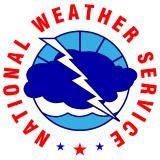Southeast Climate Monthly Webinar: July 23, 2024
The hot, dry conditions across much of the region in the past month led to a rapid expansion of drought and reduced streamflows in the Southeast. Some areas experienced record dry conditions (Virginia) and record heat (Raleigh-Durham, North Carolina). Recent rains have brought much needed relief to parts of the region, although the scattered hit-and-miss nature of summer rainfall typical to the Southeast means some areas are still dry, especially in the interior parts of the region, such as Tennessee.
Looking ahead, La Niña is expected to develop later this summer and persist through the upcoming winter. Over the next three months, temperatures and precipitation are expected to be above average across most of the Southeast and Caribbean, and the risk of flooding remains normal.
Check out the recording below to hear more on Southeast climate conditions and a special presentation, "Urban Heat: The Role of Buildings, Shade, and Green Infrastructure on Urban Heat Islands" from Peter Crank at the University of Waterloo. We have posted a webinar summary and recording on drought.gov for those who were unable to participate in the live event or wish to share it with others.
About This Webinar
The Southeast Climate monthly webinar series is hosted by the Southeast Regional Climate Center, the National Integrated Drought Information System (NIDIS), and the NOAA National Weather Service. These webinars provide the region with timely information on current and developing climate conditions such as drought, floods, and tropical storms, as well as climatic events like El Niño and La Niña. Speakers may also discuss the impacts of these conditions on topics such as agriculture production, water resources, wildfires, and ecosystems







